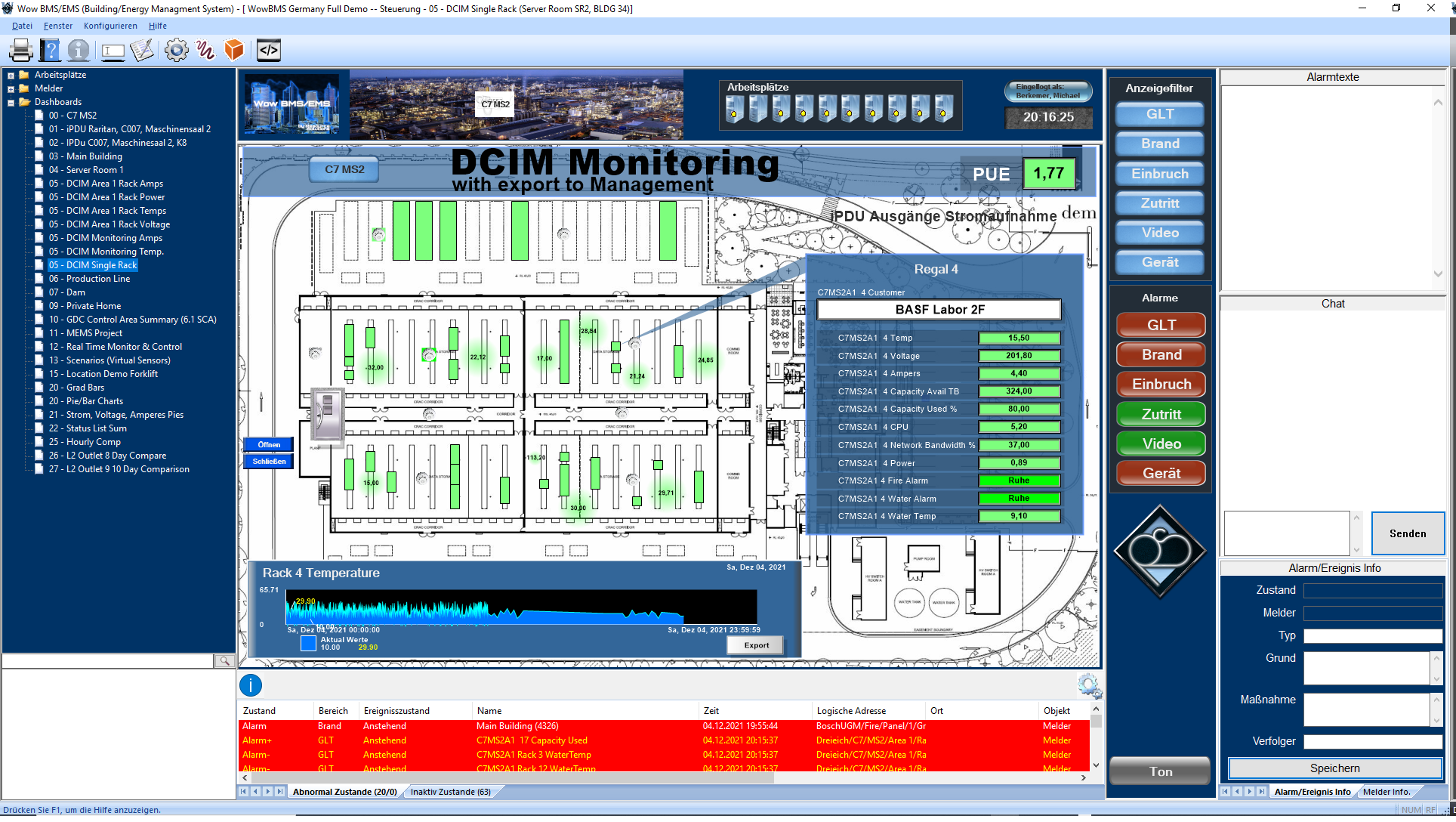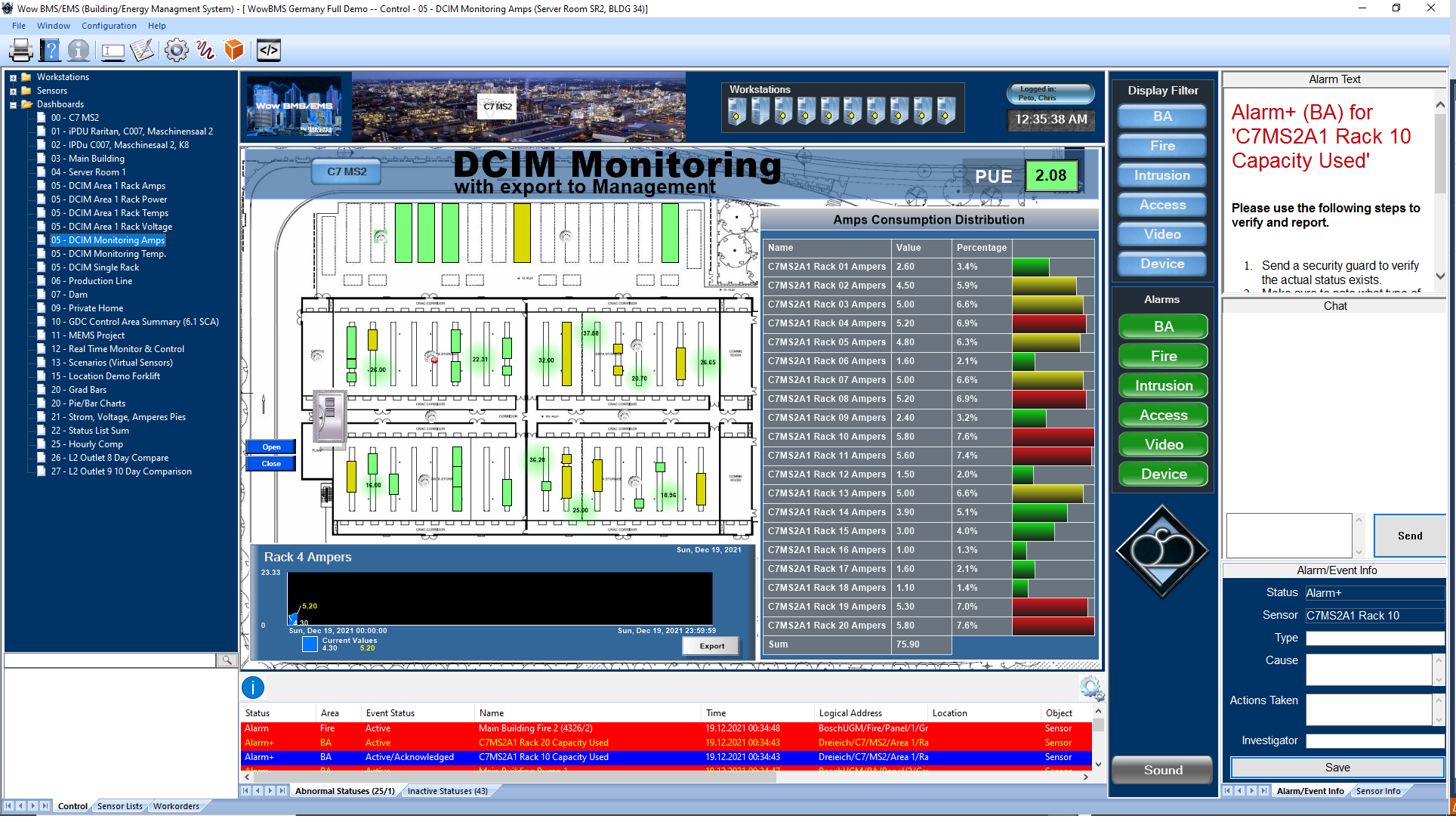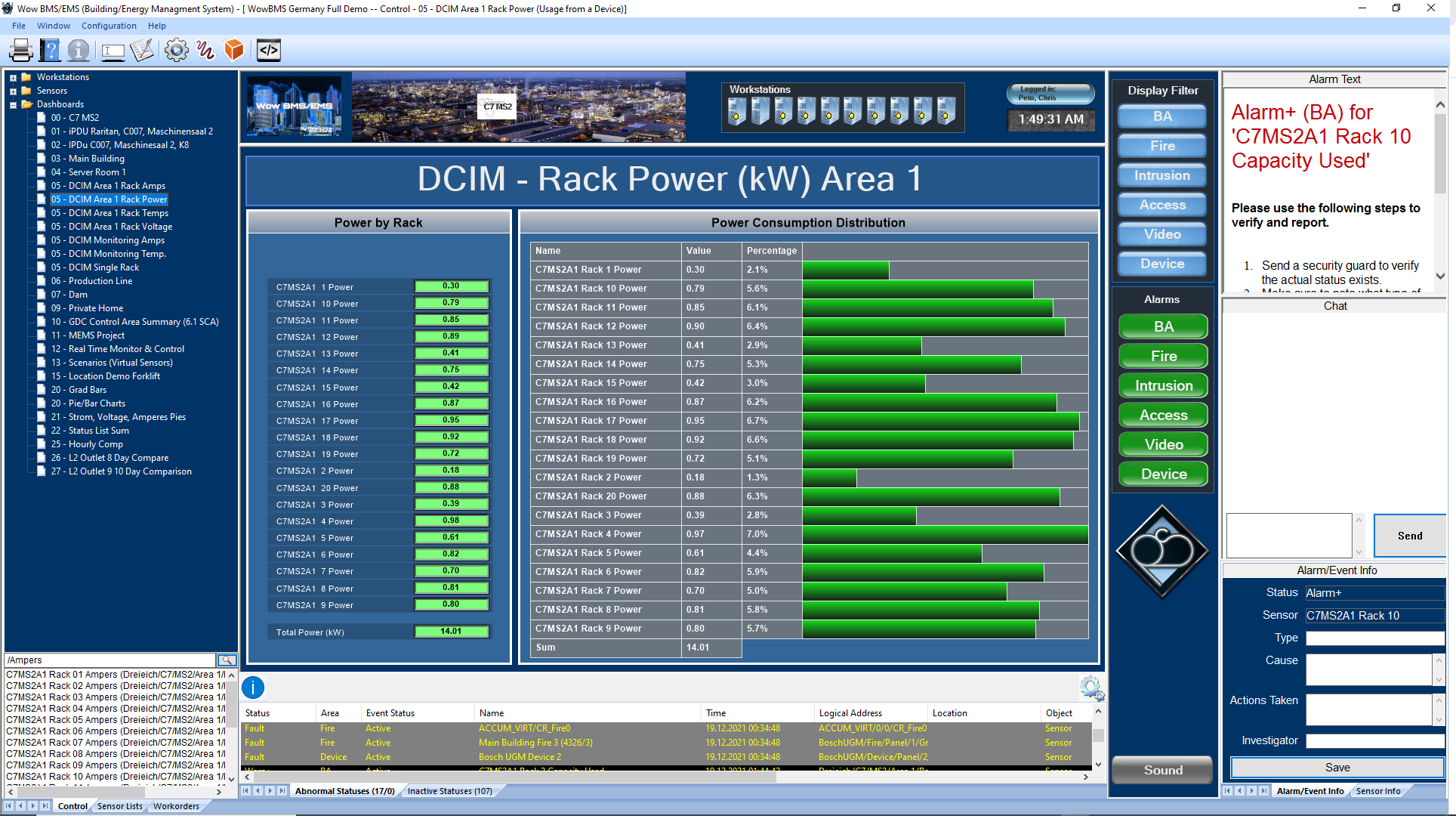With the ever increasing use of Data Centers, we have found it interesting and fun to involve our already fast growing live monitoring/alarm/control system, Wow BMS/EMS, for Data Center Infrastructure Management (DCIM) system. It is the next evolving step in management systems, both local and international.
DCIM is the convergence of IT and building facilities functions within an organization. The goal of a DCIM initiative is to provide administrators with a holistic view of a data center's performance so that energy, equipment and floor space are used as efficiently as possible.
Data center infrastructure management started out as a component of building information modeling (BIM) software, which is used by facilities managers to create building digital schematic diagrams. DCIM tools bring the same capabilities to data centers, allowing administrators to collate, store and analyze data related to power and cooling in real time. Most tools permit diagrams to be printed out -- a useful feature when maintenance is required or data center administrators need to install new equipment.
DCIM tools can help administrators locate and identify relationships between a building and its IT systems. Energy-monitoring sensors and supporting hardware can be installed along all points of the power infrastructure so the DCIM software can accurately aggregate and analyze power usage effectiveness (PUE) and cooling system energy efficiency. Some organizations will couple DCIM with computational fluid dynamic (CFD) analysis to optimize air flow and systems placement to further reduce cooling expenses. This type of approach is called continuous modeling. Continuous modeling allows the administrator to observe and quantify the engineering cause and effect of proposed IT or infrastructure changes before any money has been spent.
Ask questions around these key areas:-
- Data Center Visualization - How do I know where my assets are?
- Asset Management and Configuration - How do I know what assets I have?
- Connectivity Management – Can I visualize my entire power chain?
- Network Management – Can I see and search for network capacity?
- Power Management – How can I easily visualize and manage my power.
- Real-time Monitoring – Are tools available to ensure uptime and availability.
- Workflow – Is there a built in change management tool to manage the change in the data center and monitor the workflow?
- Reports – Can I easily build reports?
- Integration – Can I use my existing tools (spreadsheets, visio diagram)?
- Security and Audit Trails– What type of security and logging are available to protect my data and ensure trails for compliance and tracking.
- Mobile Access – can I use my mobile tablets so I can gain access anytime from anywhere?
- Maintenance and Backup – What types of processes and staff are required ?
- Services – What services are available? Integration, implementation, training, maintenance and support?
We can answer these for you.
We can evolve just as you do, actively learning and changing!


DCIM is the convergence of IT and building facilities functions within an organization. The goal of a DCIM initiative is to provide administrators with a holistic view of a data center's performance so that energy, equipment and floor space are used as efficiently as possible.
Data center infrastructure management started out as a component of building information modeling (BIM) software, which is used by facilities managers to create building digital schematic diagrams. DCIM tools bring the same capabilities to data centers, allowing administrators to collate, store and analyze data related to power and cooling in real time. Most tools permit diagrams to be printed out -- a useful feature when maintenance is required or data center administrators need to install new equipment.
DCIM tools can help administrators locate and identify relationships between a building and its IT systems. Energy-monitoring sensors and supporting hardware can be installed along all points of the power infrastructure so the DCIM software can accurately aggregate and analyze power usage effectiveness (PUE) and cooling system energy efficiency. Some organizations will couple DCIM with computational fluid dynamic (CFD) analysis to optimize air flow and systems placement to further reduce cooling expenses. This type of approach is called continuous modeling. Continuous modeling allows the administrator to observe and quantify the engineering cause and effect of proposed IT or infrastructure changes before any money has been spent.


